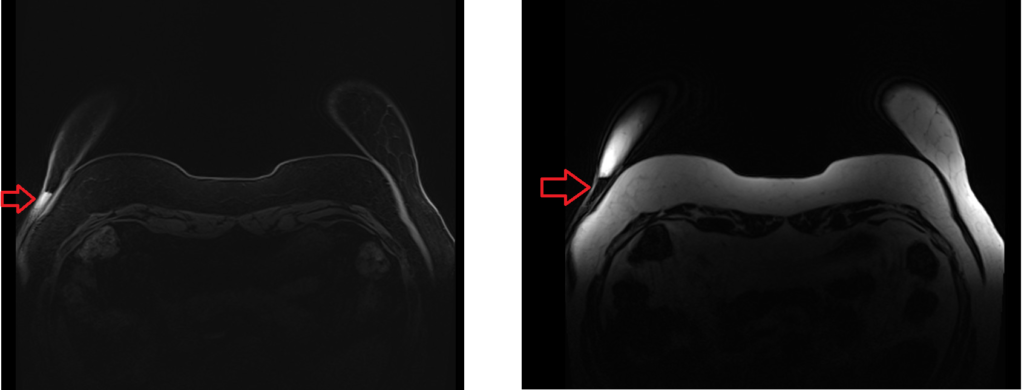MRI Fat-Water Swap Artifact
The fat-water swap artifact is a type of artifact that can occur in Dixon MRI, which is a technique used to separate water and fat signals in the body. The artifact can occur due to the presence of chemical shift misregistration.
In Dixon MRI, fat and water signals are acquired using two or more echo times, and the signals are combined to create separate images of fat and water. The frequency difference between the fat and water signals is known as the “echo time shift” or “TE shift”. If the TE shift is not accurately accounted for, the fat and water signals can be misregistered, resulting in the fat signal being assigned to the water image and vice versa.

Here are some strategies to minimize or avoid Chemical Shift Artifact
Sequence optimization: Optimize the Dixon imaging sequence parameters, including echo spacing, flip angles, matrix size and repetition time, to minimize susceptibility and off-resonance effects that contribute to fat-water swap artifact. Careful sequence design can help improve the accuracy of fat-water separation.
Optimize field map acquisition: Accurate field map estimation is crucial for reliable fat-water separation. Use appropriate field map acquisition techniques, such as dual-echo acquisitions or multi-point Dixon methods, to obtain reliable and high-quality field maps.
References:
- Glover GH. Multipoint Dixon technique for water and fat proton and susceptibility imaging. J Magn Reson Imaging. 1991 Mar-Apr;1(2):521-30. doi: 10.1002/jmri.1880010506. PMID: 1848255.
- Dixon WT. Simple proton spectroscopic imaging. Radiology. 1984 May;153(2):189-94. doi: 10.1148/radiology.153.2.6089263. PMID: 6089263.


